Running a restaurant involves inherent risks, and fire is a significant concern. Maintaining proper fire safety measures isn’t just about protecting your staff and customers; it’s also vital for ensuring your insurance coverage remains valid and preventing potential claim denials. Here’s what you need to know about essential restaurant fire safety.
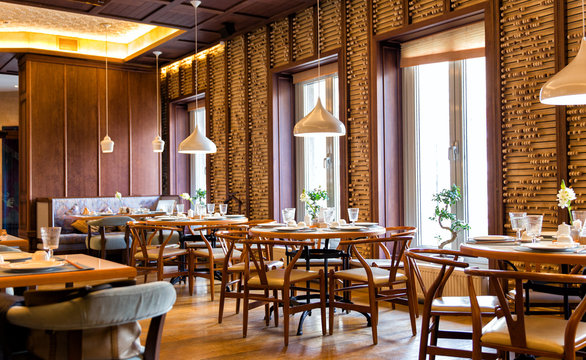
Fire Extinguisher Tags: Your Safety Checklist
Fire extinguishers are your first line of defense in a small fire. But a fire extinguisher is only effective if it’s in proper working order. That’s where the tag comes in. Your fire extinguishers are crucial for immediate fire suppression, but their condition directly impacts your insurance coverage.
- What to Look For: Every commercial fire extinguisher should have a service tag attached. This tag indicates the date of the last inspection and service. Insurers expect these tags to be current.
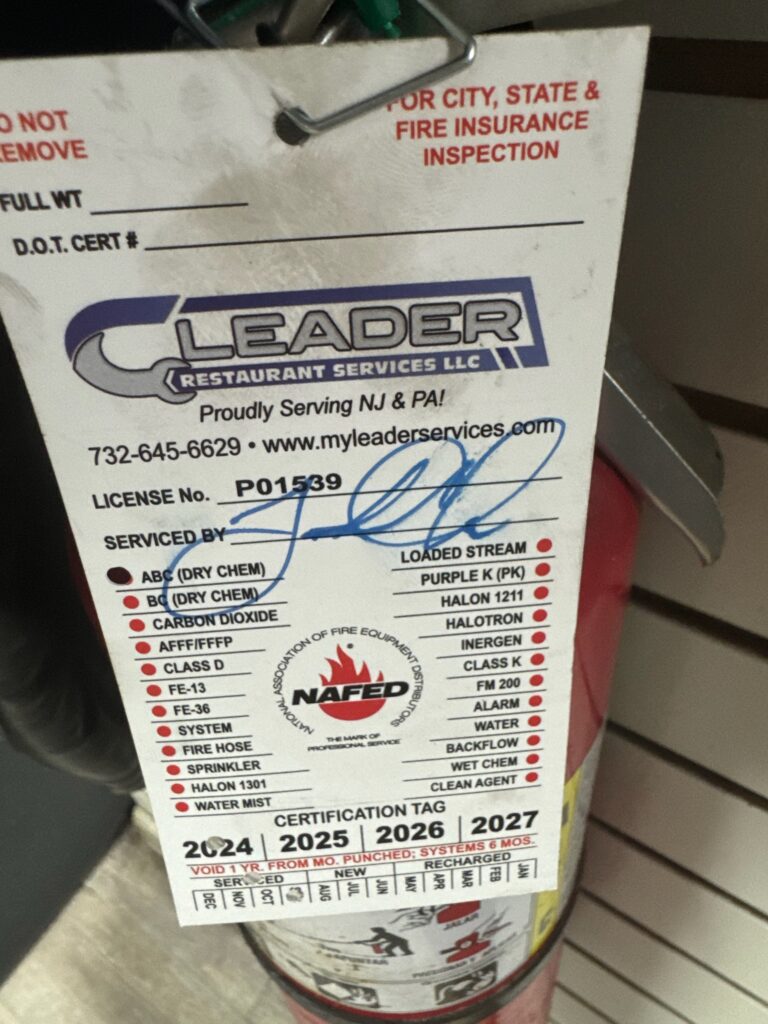
- Service Frequency & Insurance: Fire extinguishers typically need to be inspected annually by a certified professional. Some jurisdictions may require more frequent inspections. Most insurance policies require annual professional servicing. An expired tag can be a red flag for insurers and could impact a claim.
- Your Responsibility: Regularly check the tag to ensure the last service date is within the past year. If the tag is missing or expired, contact your fire safety service provider immediately. Additionally, perform monthly visual checks to ensure the extinguisher is accessible, fully charged, and undamaged. An expired tag signals a potential lapse in safety protocols, which insurers take seriously. Monthly visual checks also demonstrate due diligence.
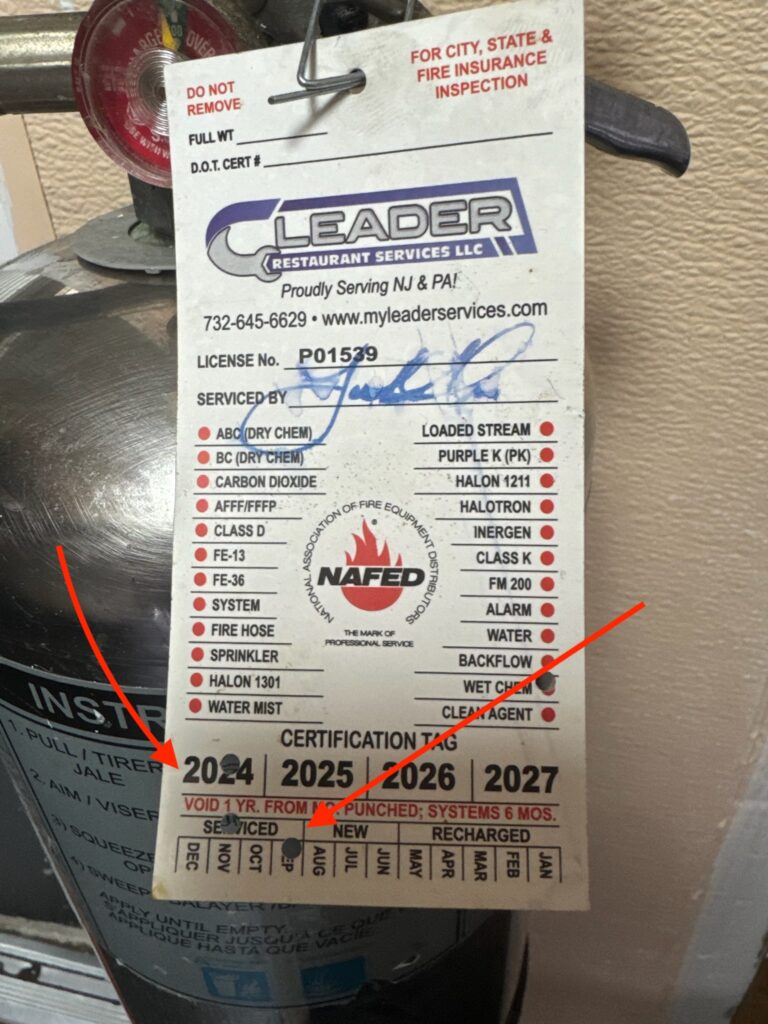
Restaurant Hood Cleaning: Preventing Grease Fires
Commercial kitchen hoods and exhaust systems are designed to remove grease, smoke, and heat. However, grease buildup is inevitable and poses a significant fire hazard.
- Why Regular Cleaning is Essential: Grease is highly flammable. If it accumulates in your hood and ductwork, even a small flame can quickly escalate into a major fire. Regular cleaning removes this fuel source.
- Service Frequency & Policy Requirements: Most jurisdictions and insurance companies require commercial kitchen hoods to be professionally cleaned every two months. This frequency can vary depending on the volume and type of cooking. Failure to adhere to this can be a policy violation.
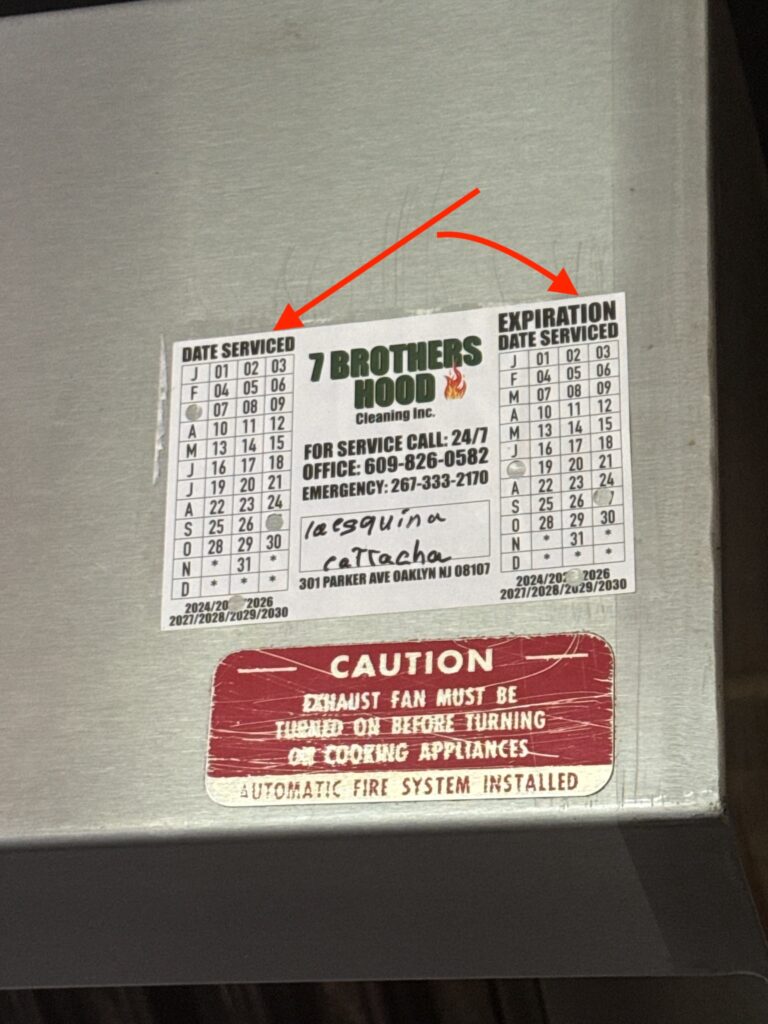
- Identifying Service: After a professional cleaning, you should receive documentation detailing the service performed. Look for a sticker or tag on the hood indicating the date of cleaning and the company that performed the service. Keep records (stickers, invoices) of professional cleanings as proof of maintenance for your insurer.
- Daily Cleaning as Risk Mitigation: Between professional cleanings, your staff should perform daily cleaning of accessible areas like filters and surfaces to minimize grease buildup.
Ansul System: Your Automatic Fire Suppression
An Ansul system is an automatic fire suppression system specifically designed for commercial kitchens. It’s your silent guardian, ready to activate in the event of a fire.
- What It Is: The system typically consists of nozzles strategically placed above cooking equipment, a heat-sensitive link or manual pull station, and a tank containing a fire-suppressing agent. When a fire is detected, the system automatically discharges the agent to extinguish the flames.
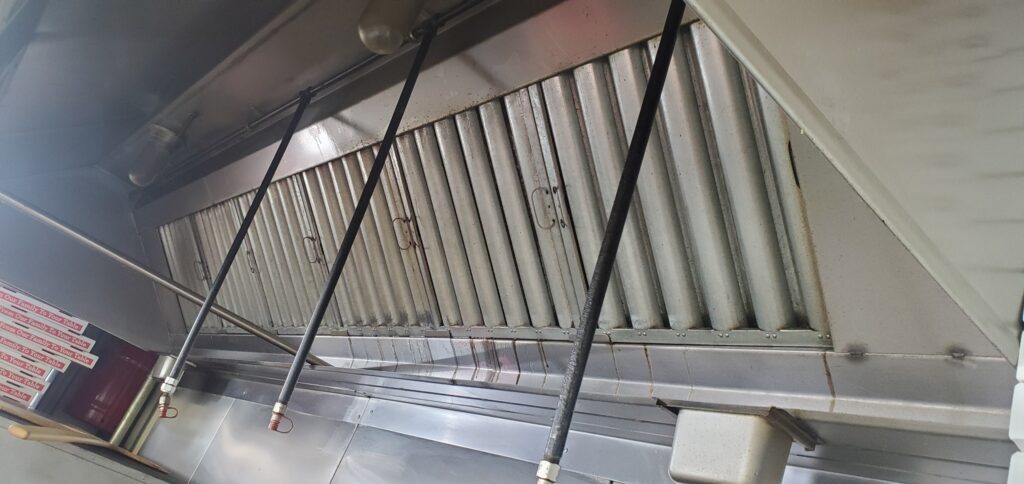
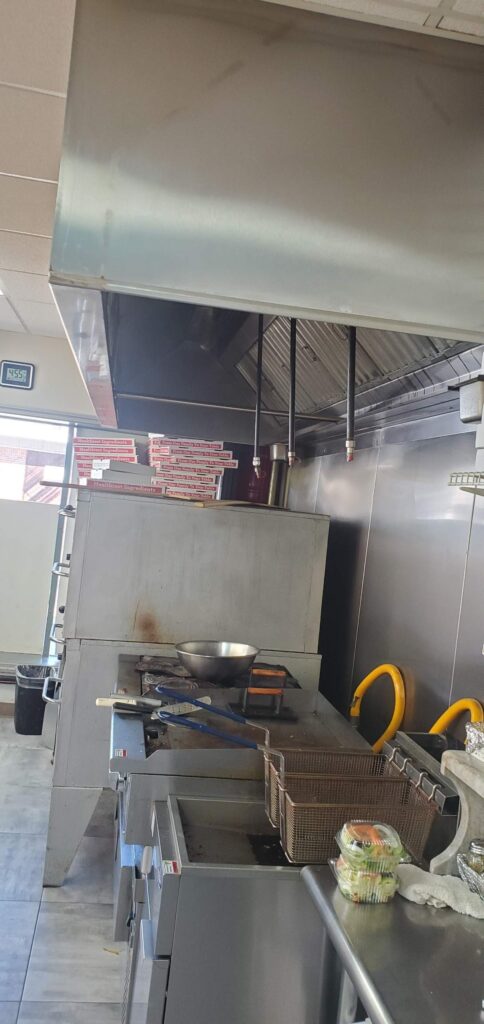
- Service Frequency: Ansul systems require semi-annual (every six months) professional inspection and maintenance to ensure they will function correctly when needed.
- Wet vs. Dry Systems:
- Wet Chemical Systems: These are most common in modern kitchens and use a liquid agent specifically designed to saponify grease fires (turn grease into a soapy, non-flammable substance).
- Dry Chemical Systems: Older systems may use dry chemical agents to smother fires. Wet chemical systems are generally more effective for grease fires. Your service tag should indicate the type of system you have.
Baffles: Creating a Firebreak
Baffles are physical barriers installed in your kitchen to help prevent the spread of fire between different cooking appliances.

- What They Should Look Like: A common recommendation is to install a stainless steel baffle at least 8 inches high that extends the length of the cooktop range. Alternatively, ensure a minimum separation of 16 inches between a deep fat fryer and a cooktop range.
- Purpose: The baffle acts as a physical barrier to contain flames and hot grease splatters, reducing the likelihood of a fire spreading from a high-risk appliance like a deep fryer to other cooking surfaces.
- Why They Matter to Insurers: Baffles reduce the potential for a small fire to become a large, costly claim. Their absence might be noted during an insurance inspection.
Conclusion
By prioritizing the maintenance of these fire safety systems, you’re not only protecting your restaurant but also demonstrating a commitment to risk management that is crucial for maintaining adequate and affordable insurance coverage. Always work with certified professionals and keep detailed records for your insurer.
